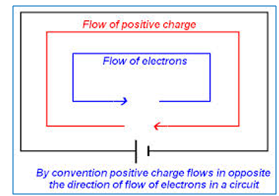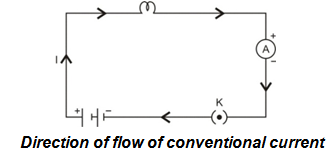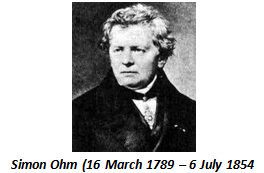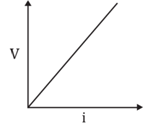Electric Current
Electricity of Class 6
ELECTRIC CURRENT:
Previously we have learnt that while charging a conductor electrons moved from body with excess electrons to the body with a deficiency of electrons until a balance is reached. Since an electron carries charge we can say that charge was flowing. Such a flow of charge is called an electric current.
Definition: An electric current is defined as the rate of flow of charge per unit time.
Units of current: SI unit of current is ampere (A). A current of magnitude 1 ampere is said to flow through a conductor when a charge of magnitude 1 coulomb flows through it in 1 second.
1 ampere = 1 coulomb/sec
Direction Of Current
Electric current is the flow of negatively charged electrons, from negative to positive terminal. Conventional current is said to flow from positive to negative, that is, opposite to the flow of electrons.
Ohms Law:
According to Ohms law “The electric current flowing through a conductor is directly proportional to the potential difference across its ends, provided the temperature remains constant and the physical state of the conductor remains the same”.
where, ‘R’ is the electrical resistance.
The graphical representation of Ohm’s law is a straight line passing through origin. The slope of the graph gives the value of resistance offered by the conductor.
Conductors which obey ohm’s law are known as ohmic conductors and those which do not are known as non-ohmic conductors.
Illustration 5: If a current of 5A flows through a 0.6 W resistor, what is the potential difference across the resistor?
Solution: According to Ohm’s law V = iR
Þ V= (5 × 0.6) volt = 3 volt
The potential difference across the resistor is 3 volt.
















